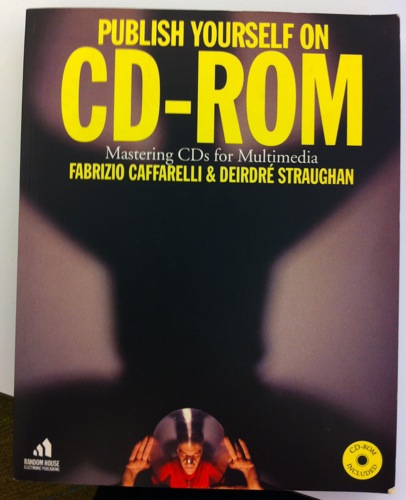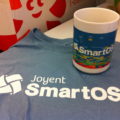In 1993, my first (and so far only) book, Publish Yourself on CD-ROM (Random House), finally hit the shelves after over a year of work.
My then-boss Fabrizio Caffarelli was listed as the first author (and got most of the royalties), and taught me much of the technical content (I did read the standards docs myself – almost the only available reference materials before our book), while the “philosophy” parts were based on ideas that we discussed at length. I did the bulk of the actual writing.
It was one of the first books in the world to include a CD, largely so that a trial version of our Easy CD 1.0 software could be distributed with it. The whole project was a marketing tool for the software. It worked: it drew attention to the product and CD recording technology in general, and set us on the road to making Easy CD the top-selling Windows CD recording app (later named by PC World one of the 50 Best Tech Products of All Time). Fabrizio became a very rich man when he sold his company to Adaptec in 1995; he was one of the early exemplars of the “build it up to sell it” cycle so common in tech today.
Ironically, the only review we ever got was in now-defunct Byte magazine. The reviewer opined: “If the authors think that CD recording will ever become cheap and easy enough for general use, they’re crazy” – or words to that effect. I’d say we got the last laugh on that one.
The book itself didn’t sell hugely – Random House paid me more to do the layout than I ever earned from my portion of the royalties. But it was good experience in every aspect of writing and producing a book. It didn’t need copyediting by the publisher – our editor said it was the “cleanest” book he’d ever received. I even did the indexing, though I had no training in that.
Perhaps the most important skill I gained was a new one in the world at that time: producing electronic content. Keep in mind that I was doing this in 1992, long before most people had heard of the World Wide Web. As I wrote a few years ago:
I had wanted to publish the electronic version of the book in Adobe’s new PDF format (which I’d heard about in the course of my work as a journalist for Italian computer magazines), but that wasn’t quite ready at the time. I used instead the same FrameMaker software I’d used to lay out the book, along with a hypertext reader supplied by Frame – I negotiated the rights to include this on our CD, which I believe was the first publication to use it. (That company is now owned by Adobe).
Designing the electronic version of the book was also a formative experience: I became adept at hypertext long before I saw the Web.
The book mentioned our CompuServe address and that we’d be glad to hear from readers. Hear from them we did, because the disc didn’t work! Something had gone wrong in manufacturing, and no one at Random House had thought to test the disc before binding it up with the book.
That was my first experience with online customer service. I was just sick over the whole situation, but Random House quickly had a working disc duplicated, and arranged shipping so that anyone who contacted them could get a replacement quickly. Once this fix was in place and easily obtainable, I was pleasantly surprised at how forgiving our readers were. In a way it was a bonus, because the mistake spurred people to get in touch with us who otherwise would never have bothered.
So, inadvertently, the book also led to me to be a pioneer in another field: online customer service and communications – what we’d now call social media. And all of this experience continues to serve me well long after the book is out of print and even the technology it teaches is nearly superfluous. There’s a life lesson in that; I’m sure you can work it out for yourself!
NB: Don’t ask me to explain that cover image – we didn’t like it, either.





Did you publish it in Italy too?
No, there was no demand. It was translated into Japanese and Chinese, though!